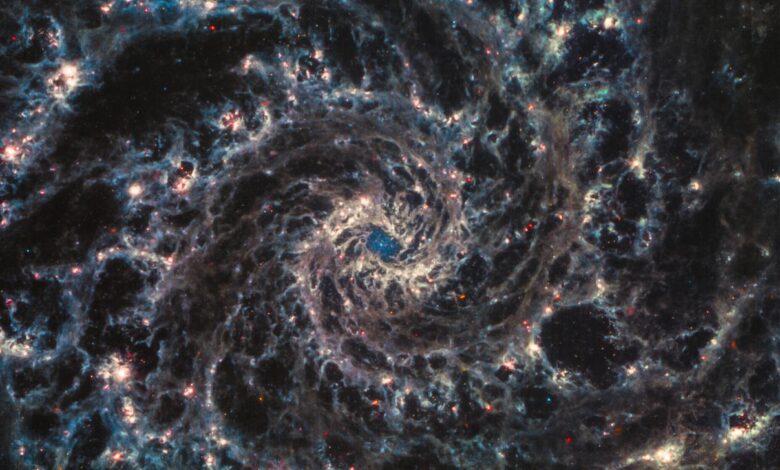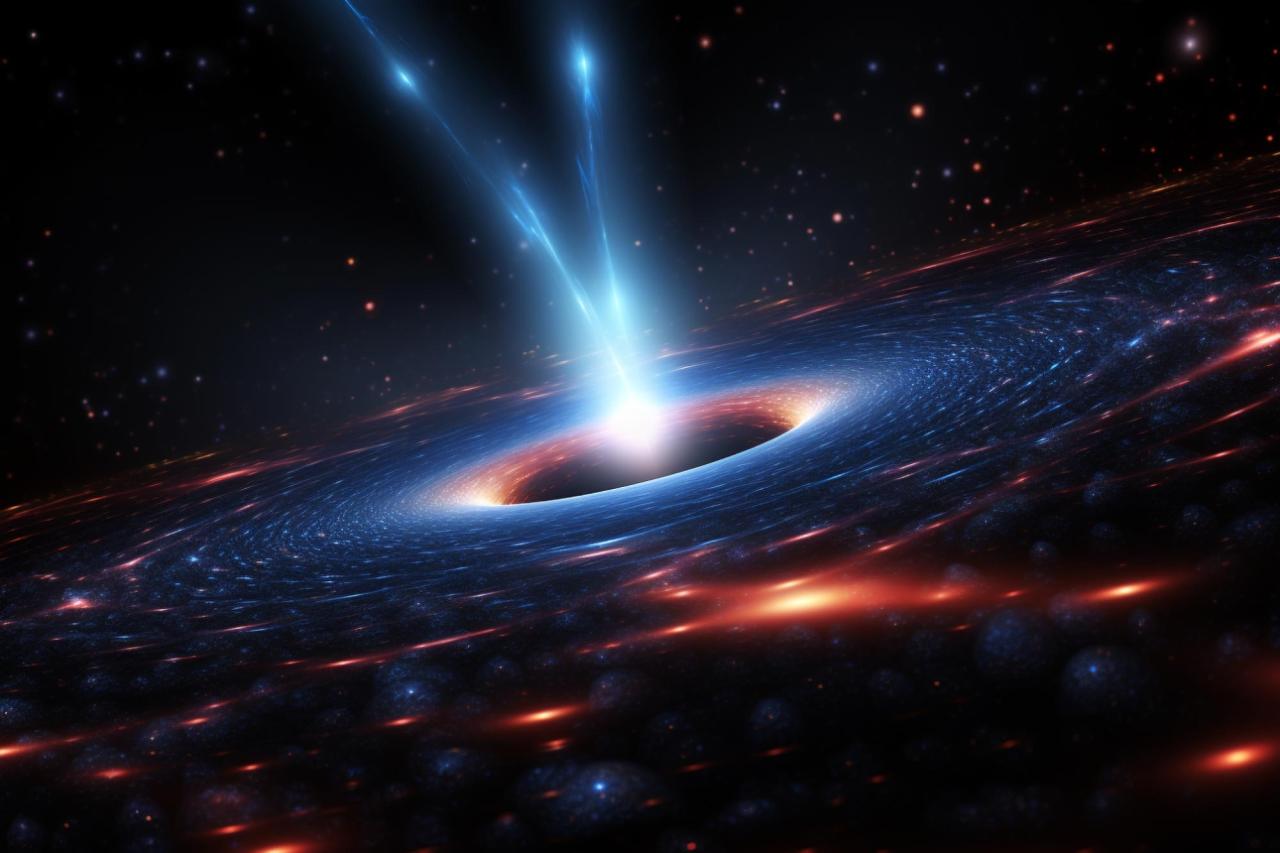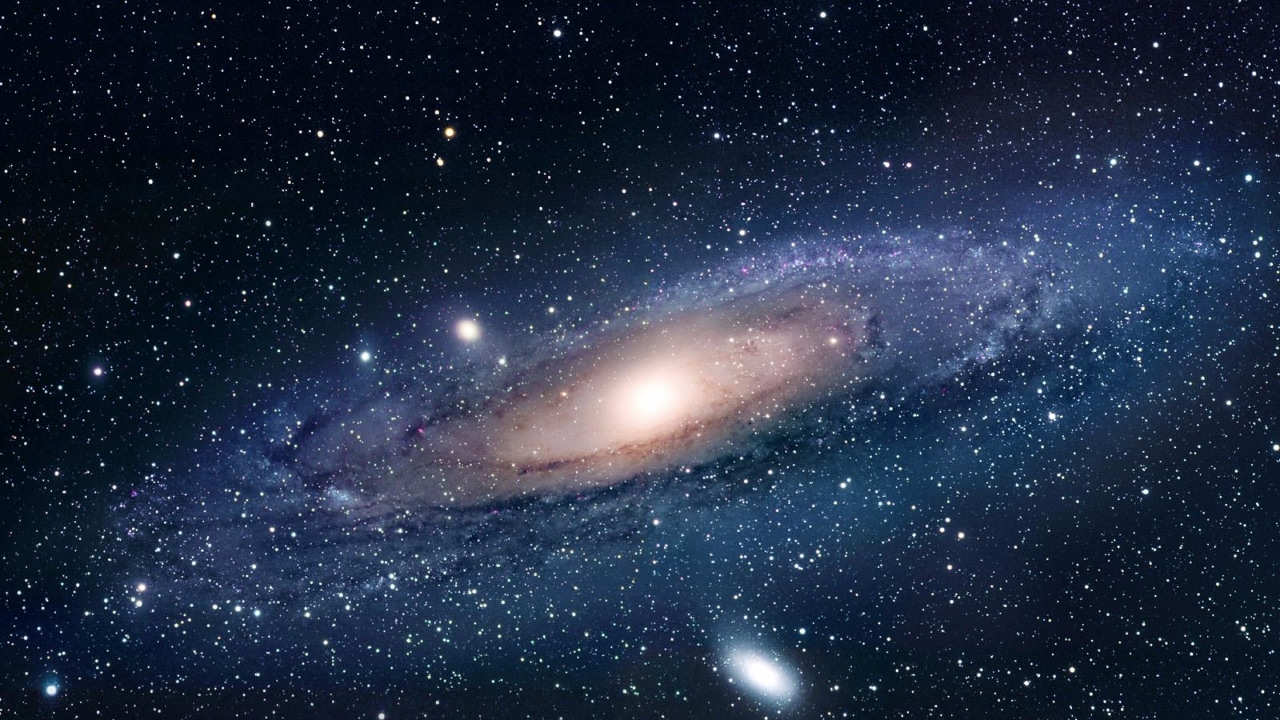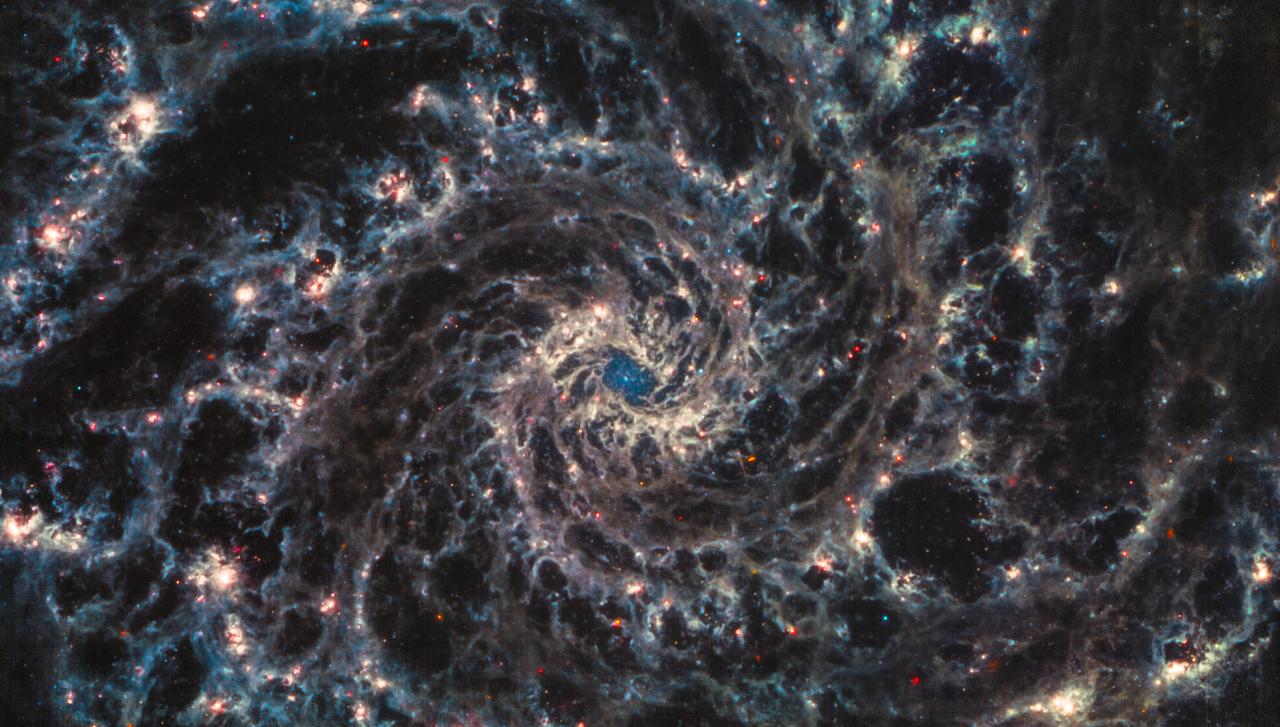
How Astronomers Finally Captured a Photo of Our Galaxys Black Hole
How astronomers finally captured a photo of our own galaxys black hole – How astronomers finally captured a photo of our own galaxy’s black hole is a story of scientific ingenuity and perseverance. For decades, astronomers have been fascinated by Sagittarius A*, the supermassive black hole lurking at the heart of the Milky Way.
This enigmatic object, with a mass millions of times that of our Sun, has been shrouded in mystery, its gravitational pull so intense that not even light can escape its grasp. Capturing an image of Sagittarius A* seemed like an impossible feat, but with the advent of the Event Horizon Telescope (EHT), a global network of radio telescopes, this dream became a reality.
The EHT, a marvel of modern astronomy, uses a technique called Very Long Baseline Interferometry (VLBI) to create a virtual telescope as large as the Earth itself. By combining data from telescopes scattered across the globe, the EHT can achieve an incredible level of resolution, allowing it to peer into the heart of Sagittarius A* and unveil its hidden secrets.
The Quest to Image Sagittarius A*
At the heart of our Milky Way galaxy lies a cosmic enigma: Sagittarius A*, a supermassive black hole with a mass four million times that of our sun. For decades, astronomers have been captivated by this enigmatic object, yearning to capture a glimpse of its event horizon, the point of no return beyond which not even light can escape.
This quest to image Sagittarius A* has been a monumental challenge, driven by the sheer distance and the nature of the black hole itself.
Challenges in Capturing Sagittarius A*
- Distance:Sagittarius A* is approximately 26,000 light-years away, making it incredibly difficult to resolve its details. Imagine trying to photograph a grapefruit on the moon! This immense distance blurs the image of Sagittarius A*, requiring advanced techniques to overcome the limitations of Earth-based telescopes.
- Black Hole Physics:Black holes are inherently dark, as their immense gravity traps light. The event horizon, the boundary around a black hole, is not a physical surface, but rather a theoretical point of no return. This makes directly observing a black hole a complex task, requiring indirect methods to capture its signature.
- Interstellar Gas and Dust:The Milky Way’s galactic center is a crowded and turbulent region, filled with interstellar gas and dust that obscures our view of Sagittarius A*. This obscuring material scatters and absorbs light, making it difficult to obtain clear images.
Historical Attempts to Observe Sagittarius A*
The quest to understand Sagittarius A* began long before the first image was captured. In the 1970s, astronomers discovered a compact, powerful radio source at the galactic center, later identified as Sagittarius A*. Since then, scientists have used various telescopes and techniques to study this enigmatic object, including:
- Radio Telescopes:Radio telescopes have played a crucial role in observing Sagittarius A*. The Event Horizon Telescope (EHT), a network of radio telescopes spanning the globe, was specifically designed to capture images of black holes.
- Infrared Telescopes:Infrared telescopes can penetrate the dust and gas obscuring Sagittarius A*, providing valuable insights into the dynamics of the region surrounding the black hole.
- X-ray Telescopes:X-ray telescopes have detected high-energy emissions from the accretion disk around Sagittarius A*, a region where gas and dust spiral inward towards the black hole.
The Event Horizon Telescope: How Astronomers Finally Captured A Photo Of Our Own Galaxys Black Hole

The Event Horizon Telescope (EHT) is a groundbreaking project that aims to capture images of black holes, the enigmatic objects in space with such immense gravity that not even light can escape their grasp. This ambitious project utilizes a network of radio telescopes scattered across the globe, effectively creating a virtual telescope with an Earth-sized aperture, allowing it to achieve unprecedented resolution.
Very Long Baseline Interferometry (VLBI)
VLBI is the key technology that enables the EHT to achieve its remarkable imaging capabilities. This technique combines signals from multiple telescopes separated by vast distances, effectively creating a telescope with an aperture equal to the distance between the telescopes.
By synchronizing the observations of these telescopes and carefully analyzing the collected data, astronomers can reconstruct a detailed image of the target object. VLBI allows the EHT to achieve an angular resolution equivalent to being able to see a golf ball on the Moon from Earth.
It’s incredible how astronomers finally captured a photo of our own galaxy’s black hole, a feat that required years of collaboration and cutting-edge technology. It reminds me of the challenges faced by PhD students today, who are also pushing boundaries in their fields.
Many are struggling to make ends meet amidst the rising cost of living, which is why they’re demanding wage increases as reported here. Just like the astronomers who needed a global network of telescopes, these students need support to reach their full potential and contribute to our understanding of the universe.
The Global Network of Radio Telescopes, How astronomers finally captured a photo of our own galaxys black hole
The EHT consists of a network of eight radio telescopes located across the globe. This network is constantly expanding, with more telescopes joining the collaboration. The following telescopes are currently part of the EHT network:
- Atacama Large Millimeter/submillimeter Array (ALMA): Located in the Atacama Desert of Chile, ALMA is the largest astronomical project in existence and is comprised of 66 high-precision antennas. ALMA plays a crucial role in the EHT, providing a significant portion of the observing power.
The image of Sagittarius A, our galaxy’s black hole, was a monumental achievement, showcasing the power of human ingenuity and collaboration. It reminded me of another remarkable feat of human resilience – the clandestine network of women who bravely provided abortions before Roe v.
Wade, as detailed in this fascinating article inside the secret network of women who performed abortions before roe. Both stories highlight the courage and determination of individuals facing seemingly insurmountable obstacles, reminding us of the enduring strength of human spirit.
- Atacama Pathfinder Experiment (APEX): Also situated in the Atacama Desert, APEX is a single 12-meter radio telescope that complements ALMA’s capabilities.
- James Clerk Maxwell Telescope (JCMT): Located atop Mauna Kea in Hawaii, the JCMT is a 15-meter telescope that contributes to the EHT’s observations.
- Large Millimeter Telescope (LMT): Situated on the Sierra Negra volcano in Mexico, the LMT is a 50-meter telescope that plays a crucial role in the EHT network.
- Submillimeter Array (SMA): Located on Mauna Kea, Hawaii, the SMA is an array of eight 6-meter telescopes that contribute to the EHT’s imaging capabilities.
- South Pole Telescope (SPT): Located at the South Pole, the SPT is a 10-meter telescope that provides unique perspectives for the EHT observations.
- Greenland Telescope (GLT): Situated in Greenland, the GLT is a 12-meter telescope that adds valuable data to the EHT network.
- NOEMA (NOrthern Extended Millimeter Array): Located in the French Alps, NOEMA is an array of 12 antennas that contributes to the EHT’s observations.
These telescopes work together as a single instrument, with each telescope contributing its unique capabilities and location to the overall project. The combined data from these telescopes is then processed and analyzed to create the final image of the black hole.
The EHT network is a testament to the power of international collaboration in scientific endeavors, pushing the boundaries of our understanding of the universe.
The Imaging Process
Capturing an image of Sagittarius A*, the supermassive black hole at the center of our Milky Way galaxy, was an unprecedented feat that required a global network of telescopes, sophisticated algorithms, and immense computational power. The process involved a combination of data collection, processing, and image reconstruction techniques, each presenting its own set of challenges.
Data Collection
The Event Horizon Telescope (EHT) is a network of eight radio telescopes strategically located around the globe, forming a virtual telescope the size of Earth. These telescopes observe Sagittarius A* simultaneously, collecting data at millimeter wavelengths. The data is then carefully synchronized and transported to powerful supercomputers for processing.
The challenges associated with observing Sagittarius A* include:
- Sagittarius A* is extremely faint and distant, making it difficult to observe. Its signal is further obscured by the dense gas and dust in the galactic center.
- The black hole’s rapid rotation and variability pose significant challenges for data collection.
The black hole’s gravity distorts spacetime, causing the light emitted from its vicinity to be stretched and warped.
- Atmospheric conditions can also affect the quality of the data collected by the telescopes.
Data Processing
The massive amount of data collected by the EHT requires sophisticated algorithms and computational power to process. These algorithms are designed to:
- Correct for the effects of Earth’s rotation and atmospheric conditions on the data.
- Calibrate the data from different telescopes to ensure that they are consistent.
- Remove noise and other artifacts from the data.
The data processing is performed on supercomputers like the Frontera at the Texas Advanced Computing Center (TACC) and the Green Bank Telescope’s correlator. These machines are capable of handling the massive amounts of data and performing complex calculations.
Image Reconstruction
Once the data is processed, it is used to reconstruct an image of Sagittarius A*. The image reconstruction process involves:
- Using a technique called interferometry, which combines the data from multiple telescopes to create a high-resolution image.
- Employing a method called “regularized maximum likelihood” to create a model of the black hole’s shadow. This method involves finding the best fit between the observed data and a theoretical model of the black hole.
- Iteratively refining the model until it accurately represents the observed data.
This complex process requires significant computational power and expertise in astrophysics, computer science, and data analysis. The final image of Sagittarius A* is a testament to the ingenuity and collaborative efforts of scientists worldwide.
Remember how astronomers finally captured a photo of our own galaxy’s black hole? It was a huge feat, and it took years of dedicated work and collaboration. Sometimes, achieving a big goal requires us to focus on the right things, just like the council post 6 ways to stop chasing rabbits in business and bring them to you instead article suggests.
By focusing on the essential tasks and not getting sidetracked by distractions, we can achieve our goals, just like those astronomers did. It’s a reminder that success often comes from a clear vision and a strategic approach, no matter what field we’re in.
The Unveiled Image

The culmination of years of dedicated effort, the Event Horizon Telescope (EHT) collaboration unveiled the first-ever image of Sagittarius A*, the supermassive black hole at the center of our Milky Way galaxy. This groundbreaking achievement, announced in May 2022, provided visual confirmation of the existence of these enigmatic objects and opened new avenues for understanding the fundamental physics of gravity and spacetime.
The Image of Sagittarius A*
The image of Sagittarius A* reveals a bright ring of light surrounding a dark central region. This ring represents the boundary of the black hole’s event horizon, the point of no return beyond which nothing, not even light, can escape its gravitational pull.
The bright emission originates from hot gas swirling around the black hole, heated to millions of degrees by its intense gravity. The image is a composite of observations taken by eight radio telescopes around the globe, working together as a single, Earth-sized telescope.
The EHT team used a technique called very-long-baseline interferometry (VLBI) to combine the signals from these telescopes, achieving a resolution equivalent to being able to see a golf ball on the moon. The image of Sagittarius A* is a testament to the power of scientific collaboration and technological innovation.
It is a remarkable achievement that has revolutionized our understanding of black holes and their role in the universe.
Confirmation of the Black Hole
The image of Sagittarius A* provides compelling visual evidence of the existence of black holes. It confirms predictions made by Albert Einstein’s theory of general relativity, which describes gravity as a curvature of spacetime caused by massive objects. The image shows that the black hole’s gravity is so strong that it bends light around it, creating the observed ring-like structure.
The image also confirms that Sagittarius A* is indeed a supermassive black hole, with a mass about 4 million times that of our sun. This information provides valuable insights into the evolution of galaxies and the role of black holes in their formation and growth.
Significance for Astrophysics and Cosmology
The imaging of Sagittarius A* has profound implications for our understanding of the universe. It provides a direct observation of a fundamental aspect of general relativity, the existence of black holes, and opens new avenues for studying these enigmatic objects.
The image also sheds light on the dynamics of gas and matter around black holes, offering insights into the processes that fuel active galactic nuclei (AGN), some of the most luminous objects in the universe. This achievement is a testament to the power of scientific collaboration and technological innovation.
It has revolutionized our understanding of black holes and their role in the universe.
Future Research

The groundbreaking image of Sagittarius A* is not just a visual triumph but a stepping stone to a deeper understanding of black holes and the universe. The Event Horizon Telescope (EHT) team continues to refine its techniques and expand its capabilities, paving the way for even more remarkable discoveries.
Expanding the EHT Network
The EHT’s power lies in its global network of telescopes. By combining data from multiple observatories, the EHT creates a virtual telescope with a resolution equivalent to the size of the Earth. Future research will focus on expanding this network, adding new telescopes and improving the existing ones.
This will enhance the EHT’s sensitivity and provide even sharper images of Sagittarius A*.
- New Telescopes:The EHT is continuously adding new telescopes to its network. This includes telescopes like the Greenland Telescope (GLT) and the Atacama Large Millimeter/submillimeter Array (ALMA), which are already contributing to the EHT observations. The addition of these telescopes significantly improves the EHT’s ability to resolve details in the vicinity of the black hole.
- Improved Technology:The EHT team is constantly improving the technology used to collect and analyze data. This includes advancements in detectors, signal processing, and data analysis techniques. These improvements will allow the EHT to capture even more detailed images of Sagittarius A* and other black holes.
Unveiling the Dynamics of Sagittarius A*
The image of Sagittarius A* offers a glimpse into the black hole’s immediate environment. Future observations will delve deeper, revealing the complex dynamics of the accretion disk and the powerful jets emanating from the black hole.
- Accretion Disk Dynamics:The EHT can observe the hot gas swirling around Sagittarius A*, providing insights into the accretion disk’s structure, rotation, and the processes that drive the gas towards the black hole. These observations will help us understand how black holes grow and evolve.
- Jet Formation:EHT observations can shed light on the formation of the powerful jets that emanate from black holes. These jets are streams of highly energetic particles that can travel vast distances, influencing the evolution of galaxies. By studying the jets of Sagittarius A*, we can gain a deeper understanding of the physics behind their formation and the impact they have on the surrounding environment.
Testing General Relativity
Einstein’s theory of general relativity has been remarkably successful in explaining the behavior of gravity, including the existence of black holes. However, there are some aspects of black holes that are not fully understood. The EHT offers a unique opportunity to test general relativity in the extreme environment of a black hole.
Einstein’s theory predicts that the gravitational pull of a black hole is so strong that not even light can escape its event horizon.
- Shadow Size and Shape:The EHT can measure the size and shape of the black hole’s shadow, which is the region where light is bent by the black hole’s gravity. These measurements can be compared to the predictions of general relativity, providing a stringent test of the theory in the strong gravitational field of a black hole.
- Polarization:The EHT can also measure the polarization of light coming from the black hole’s vicinity. Polarization provides information about the magnetic field in the region, which is crucial for understanding the dynamics of the accretion disk and the formation of jets.
By studying the polarization of light near Sagittarius A*, we can further test the predictions of general relativity.
Final Conclusion
The image of Sagittarius A*, a swirling ring of light marking the black hole’s event horizon, is a testament to human ingenuity and the power of collaboration. It marks a pivotal moment in our understanding of black holes and the universe itself.
This groundbreaking achievement opens a new window into the enigmatic world of these celestial objects, allowing us to probe their properties and unravel the mysteries they hold. As we continue to refine our observations and develop new technologies, we can expect to learn even more about Sagittarius A* and the fundamental forces that govern the cosmos.

